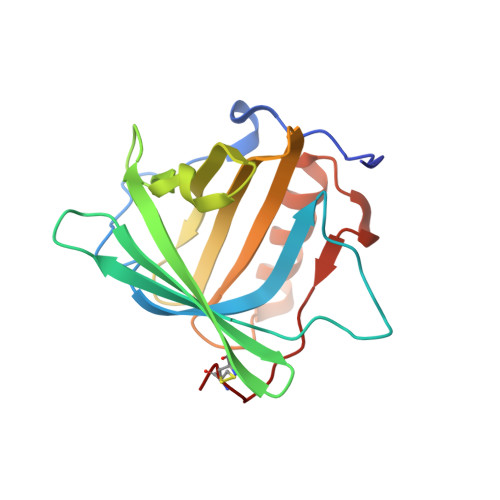Actinium chelation and crystallization in a macromolecular scaffold.
Wacker, J.N., Woods, J.J., Rupert, P.B., Peterson, A., Allaire, M., Lukens, W.W., Gaiser, A.N., Minasian, S.G., Strong, R.K., Abergel, R.J.(2024) Nat Commun 15: 5741-5741
- PubMed: 39009580
- DOI: https://doi.org/10.1038/s41467-024-50017-5
- Primary Citation of Related Structures:
8UYN, 8UZ9 - PubMed Abstract:
Targeted alpha therapy (TAT) pairs the specificity of antigen targeting with the lethality of alpha particles to eradicate cancerous cells. Actinium-225 [ 225 Ac; t 1/2 = 9.920(3) days] is an alpha-emitting radioisotope driving the next generation of TAT radiopharmaceuticals. Despite promising clinical results, a fundamental understanding of Ac coordination chemistry lags behind the rest of the Periodic Table due to its limited availability, lack of stable isotopes, and inadequate systems poised to probe the chemical behavior of this radionuclide. In this work, we demonstrate a platform that combines an 8-coordinate synthetic ligand and a mammalian protein to characterize the solution and solid-state behavior of the longest-lived Ac isotope, 227 Ac [t 1/2 = 21.772(3) years]. We expect these results to direct renewed efforts for 225 Ac-TAT development, aid in understanding Ac coordination behavior relative to other +3 lanthanides and actinides, and more broadly inform this element's position on the Periodic Table.
Organizational Affiliation:
Chemical Sciences Division, Lawrence Berkeley National Laboratory, Berkeley, CA, 94720, USA.


















